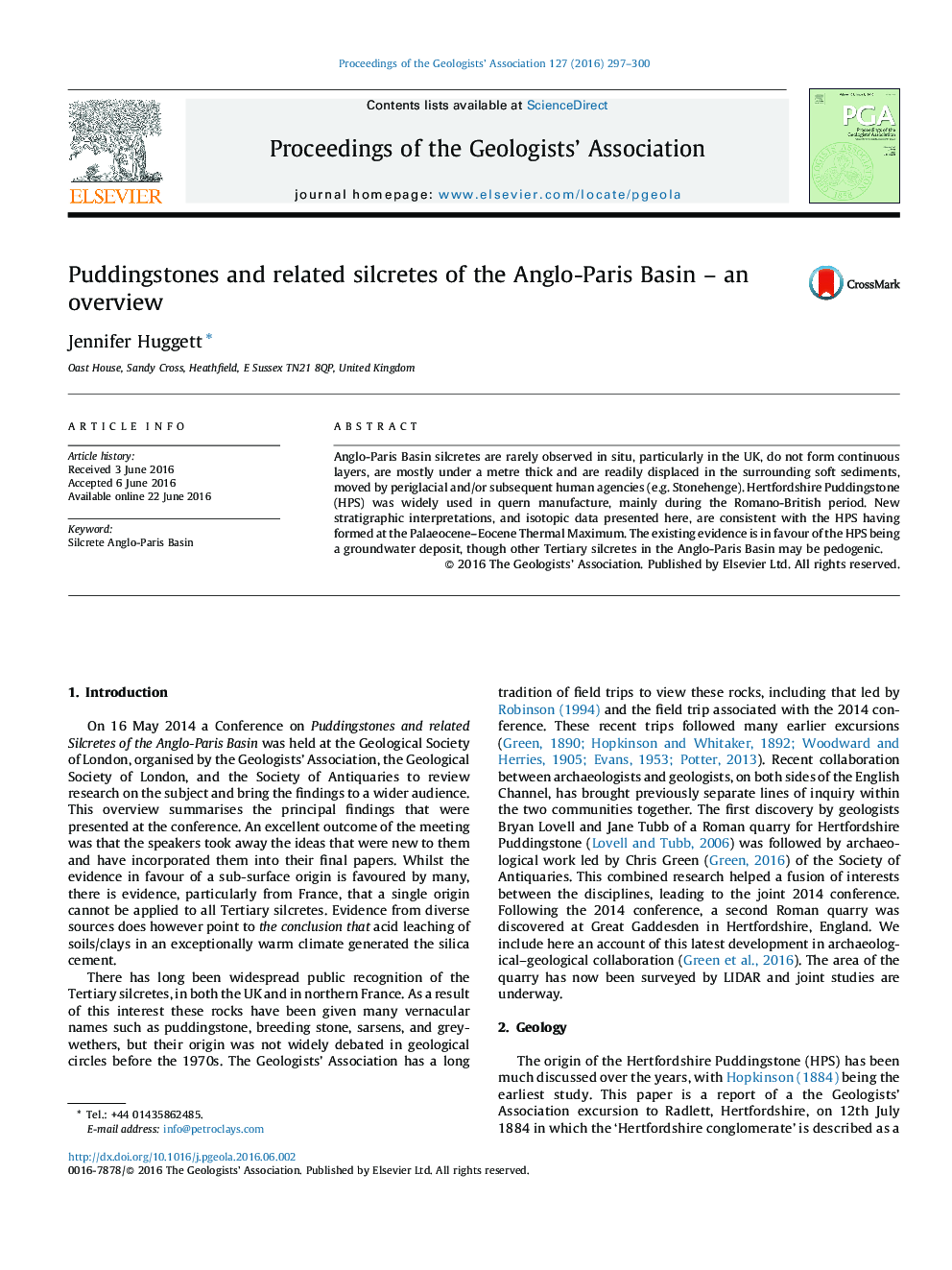| Article ID | Journal | Published Year | Pages | File Type |
|---|---|---|---|---|
| 4734576 | Proceedings of the Geologists' Association | 2016 | 4 Pages |
Abstract
Anglo-Paris Basin silcretes are rarely observed in situ, particularly in the UK, do not form continuous layers, are mostly under a metre thick and are readily displaced in the surrounding soft sediments, moved by periglacial and/or subsequent human agencies (e.g. Stonehenge). Hertfordshire Puddingstone (HPS) was widely used in quern manufacture, mainly during the Romano-British period. New stratigraphic interpretations, and isotopic data presented here, are consistent with the HPS having formed at the Palaeocene–Eocene Thermal Maximum. The existing evidence is in favour of the HPS being a groundwater deposit, though other Tertiary silcretes in the Anglo-Paris Basin may be pedogenic.
Related Topics
Physical Sciences and Engineering
Earth and Planetary Sciences
Geology
Authors
Jennifer Huggett,
